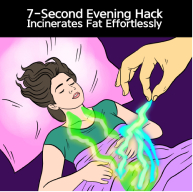Understanding the Power of a Digital Detox
In our hyper-connected world, especially for women over 35 balancing multiple roles, the constant hum of digital devices can often feel overwhelming. The concept of a digital detox — a deliberate period of abstaining from or reducing digital device usage — provides a meaningful way to reclaim mental clarity, emotional balance, and physical health. Modern technology has eased many aspects of life but also introduced challenges like digital addiction and the deleterious effects of screen time on health. This article explores the comprehensive benefits of digital detox, practical guidance on how to do a digital detox, and the transformative outcomes for mind and body.
Psychological and Emotional Benefits of Digital Detox
Improved Mindfulness and Presence
Notifications and alerts fragment our attention, pulling us away from the here and now. Psychologist Kia-Rai Prewitt, PhD, emphasizes that stepping away from screens allows the brain to better concentrate and enhances awareness of immediate surroundings, fostering mindfulness and richer life experiences.
Reduced Stress and Anxiety
Constant digital engagement keeps our nervous system on high alert, contributing to chronic stress and elevated cortisol levels. Taking time to disconnect can lower stress, enhance emotional regulation, and strengthen personal relationships. Many individuals report improved mood and relief from the pressure of staying “always connected.” Digital Detox – Cleveland Clinic
Enhanced Focus and Cognitive Performance
Digital distractions degrade attention spans and lead to cognitive overload. A digital detox provides a cognitive reset, improving focus, memory retention, and decision-making skills — essential benefits for busy women navigating work, family, and personal growth.
Better Sleep Quality
Exposure to blue light from screens suppresses melatonin production, disrupting natural circadian rhythms. Abstaining from screens, particularly before bedtime, supports melatonin synthesis, leading to deeper and more restful sleep. Improved sleep quality cascades into better emotional stability and daytime functioning. Digital Detox and Sleep – Cleveland Clinic
Physical Health Improvements
Alleviating Digital Eye Strain and Postural Issues
Prolonged screen exposure can cause eye strain, headaches, and posture-related discomfort. Regular digital detox periods allow the body to recover and reduce musculoskeletal stress.
Enhanced Physical Activity
Research correlates high screen time with decreased levels of vigorous physical activity. Incorporating screen-free periods encourages engagement in outdoor and physical activities, which enhance neuroplasticity, mood regulation, and overall well-being. Simple integrations such as walking meetings or outdoor breaks can offset sedentary tendencies associated with device use.
Immune System and Metabolic Benefits
Quality sleep restoration from reduced screen exposure bolsters immune function and metabolic health, lowering risks for weight gain, diabetes, and cardiovascular diseases.
Addressing Digital Addiction Through Detox
The pervasive use of smartphones and social media platforms fosters compulsive behaviors and dopamine-driven reward loops, often resulting in diminished face-to-face social engagement and heightened anxiety. Digital detoxes have emerged as critical tools for combating such addiction by curbing compulsive checking and improving digital mindfulness.
While trendy “dopamine detox” approaches aim to reset reward systems through abstinence, experts advocate for behaviorally grounded strategies emphasizing long-term habit change, mindful technology use, and healthy alternatives such as exercise or offline socializing. Cognitive-behavioral interventions integrated with digital detox promote sustainable mental health improvements. Smartphone Addiction and Digital Detox Overview – Rehabs UK
Practical Strategies: How to Do a Digital Detox
Start Small and Be Intentional
Begin with manageable goals like device-free meals or turning off non-essential notifications. Gradual changes build resilience and prevent feelings of overwhelm.
Designate Device-Free Zones and Times
Create screen-free areas in your home, such as bedrooms and dining spaces, or enforce tech-free hours (e.g., one hour before bedtime).
Schedule Regular Digital Sabbaths
Implement weekend or full-day digital detox sessions to deeply reset mental and emotional balance. Participating in immersive offline activities during these times helps cultivate presence and connection.
Replace Screen Time with Offline Activities
Engage in physical exercise, reading paper books, nature walks, or creative hobbies to reconnect with your environment and decrease digital dependence.
Use Technology Mindfully
Utilize apps that track screen time or block distracting sites during work hours. Technology itself can support healthy digital habits.
Involve Family and Friends
Turn detox into a shared challenge or activity. Mutual support enhances motivation and adherence.
Mindfulness and Presence Through Digital Disconnection
Digital detox isn’t just about reducing screen time—it cultivates an essential psychological shift toward being fully present. By silencing digital noise, individuals develop self-awareness, deepen interpersonal connections, and appreciate life’s simple moments more fully. Especially for women balancing family and career, this mindful presence strengthens emotional well-being and resilience. 3-Minute Mindfulness Practice: Digital Detox – Calm Classroom
Overcoming Challenges and Sustaining a Digital Detox
Temporary feelings of isolation or anxiety are common when beginning a digital detox but typically subside as individuals adjust. Tailoring detox approaches to personal habits and needs promotes long-term success.
Gradual, flexible strategies combined with alternative fulfilling activities and social support create sustainable transformation rather than abrupt discontinuities.
Conclusion: Embrace Digital Wellbeing for Lasting Balance
Integrating a digital detox into your lifestyle is a powerful step toward reclaiming control over your time, focus, and health. The multidimensional benefits of digital detox span reduced stress, enhanced cognitive clarity, improved sleep, physical rejuvenation, and strengthened real-world relationships. By adopting practical detox strategies tailored to your life, you can foster mindful technology use that supports both your wellbeing and productivity.
Begin your journey today—experience the freedom and presence that comes with a balanced, intentional relationship to digital life.
FAQs About Digital Detox
Q1: What are the key benefits of a digital detox?
A: Key benefits include reduced stress, better sleep, improved focus, enhanced mindfulness, decreased symptoms of digital addiction, and better physical health.
Q2: How long should a digital detox last?
A: There’s no one-size-fits-all duration; some start with a few hours daily, others with digital-free days or weekends. Gradual and consistent detox periods tend to be more sustainable.
Q3: How can I manage digital detox with a busy schedule?
A: Start with small steps, such as device-free meals and turning off notifications, and incorporate regular unplugged times into your routine without overwhelming yourself.
Q4: Can digital detox help with mental health conditions like anxiety or depression?
A: Yes, studies show that reducing digital exposure can alleviate symptoms of anxiety and depression by lowering stress and enhancing real-world social connections.
Q5: What are practical tips to reduce the effects of screen time on health?
A: Use blue light filters, take frequent breaks (e.g., 20-20-20 rule), designate device-free zones, incorporate physical activity, and establish mindful technology habits.
This comprehensive guide synthesizes research-driven insights to empower women over 35 in the US and Canada to regain balance through mindful digital detox practices.







